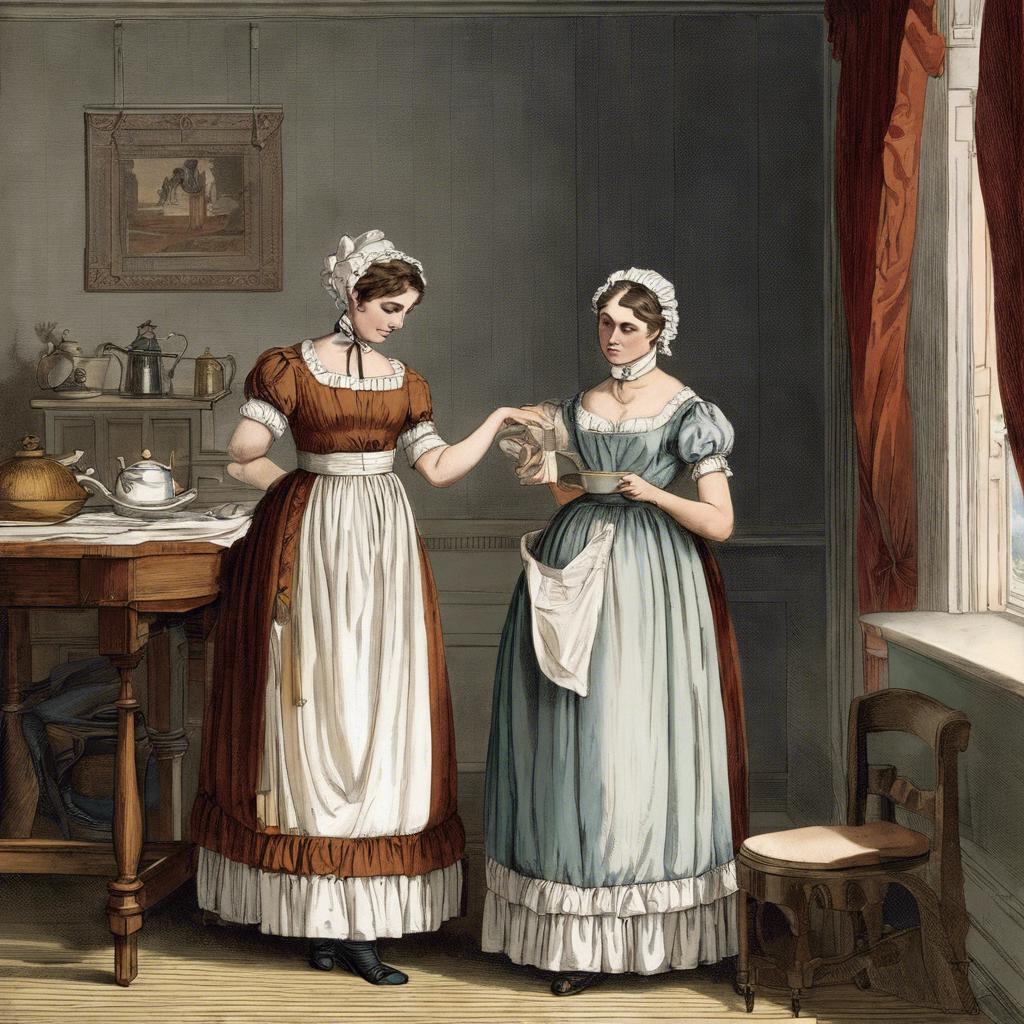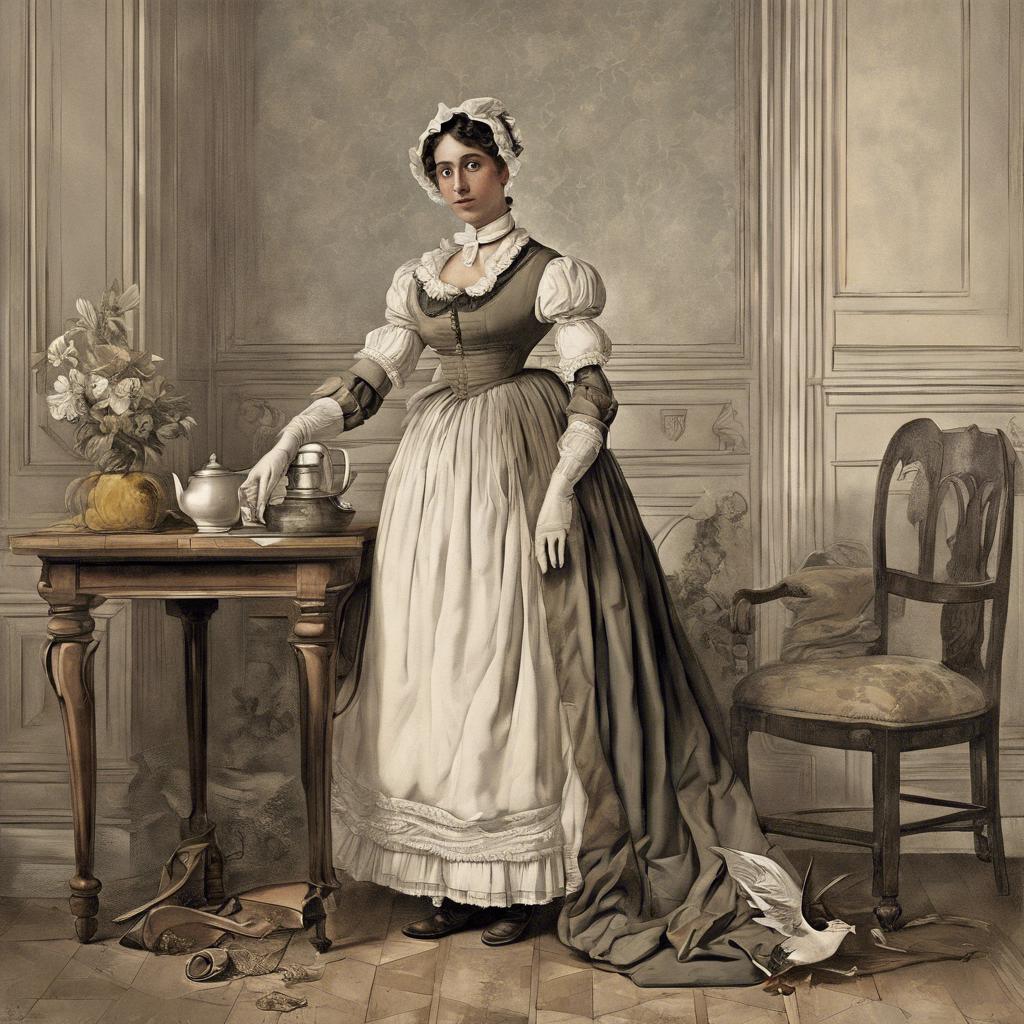During the regency era in England, the role of a lady’s maid held great significance in the household of the aristocracy. Serving as a trusted confidante and personal assistant to the mistress of the house, the lady’s maid played a pivotal role in maintaining the social status and appearance of her employer. This article aims to explore the duties, responsibilities, and daily life of a regency era lady’s maid, shedding light on the inner workings of the elite households of the early 19th century.
Step Into the World of Cheryl Bolen
Dive into the enchanting stories of love, intrigue, and elegance set in the Regency Era. Cheryl Bolen's novels offer timeless romance and captivating tales that will leave you wanting more.
Explore Cheryl Bolen's Books Now
Roles and Responsibilities of a Regency Era Ladys Maid
In the Regency Era, a lady’s maid played a crucial role in assisting her mistress in all aspects of grooming, dressing, and personal care. The responsibilities of a lady’s maid were varied and demanding, requiring a high level of skill, discretion, and attention to detail.
Key Roles and Responsibilities of a Regency Era Lady’s Maid:
-
Dressing and Grooming: A lady’s maid was responsible for helping her mistress with dressing and grooming, including selecting and arranging her clothes, assisting with hair styling, and ensuring that her appearance was flawless at all times.
-
Personal Care: In addition to dressing and grooming, a lady’s maid was also responsible for the personal care of her mistress, which included assisting with bathing, skincare, and other hygiene routines.
-
Confidante and Companion: Beyond her practical duties, a lady’s maid also served as a confidante and companion to her mistress, providing emotional support and companionship in the often lonely and claustrophobic world of the upper-class woman.
The Importance of Discretion and Loyalty in Service
During the Regency era, being a lady’s maid was a position of great responsibility that required both discretion and loyalty. A lady’s maid was not just a servant but a confidante and companion to the lady of the house. It was essential for a lady’s maid to keep her mistress’s secrets and protect her reputation at all costs.
Discretion was paramount in the role of a lady’s maid. She was privy to intimate details of her mistress’s life and had access to her personal belongings. It was imperative for a lady’s maid to never gossip or betray her mistress’s trust. Loyalty was also crucial, as a lady’s maid was expected to be unwavering in her devotion and dedication to her mistress.
In a time when social status and reputation were of utmost importance, a lady’s maid played a vital role in maintaining the facade of propriety and respectability. By upholding the values of discretion and loyalty, a lady’s maid not only served her mistress but also preserved the honor and dignity of the household.
Recommended Skills and Qualities for Aspiring Ladys Maids
For aspiring Ladys Maids in the regency era, possessing a set of specific skills and qualities was essential to succeed in this prestigious role. Attention to detail, discretion, and impeccable personal grooming were paramount in serving the needs of their lady. Additionally, having a deep understanding of proper etiquette and social norms was crucial for navigating the complex world of high society.
One key skill for a successful Lady’s Maid was the ability to proficiently perform a wide range of household tasks, including clothing care, hairstyling, and basic sewing. A keen eye for fashion trends and a knack for coordinating outfits were also highly valued qualities. Moreover, being well-versed in the art of conversation and possessing a polite and respectful demeanor were vital when interacting with both the lady of the house and esteemed guests.
To excel in this esteemed position, Ladys Maids needed to exhibit loyalty, reliability, and a strong work ethic. They were expected to anticipate their lady’s needs, provide exceptional service, and maintain a high level of professionalism at all times. Adaptability and the ability to work well under pressure were crucial for handling the demands of a busy household and ensuring the comfort and well-being of their lady.
Etiquette and Protocol for Interacting with Nobility
During the Regency era, it was essential for a lady’s maid to be well-versed in the rules of etiquette and protocol when interacting with nobility. Following these guidelines ensured that the maid represented her mistress with grace and sophistication at all times.
When in the presence of nobility, a lady’s maid must always maintain a respectful and deferential attitude. This includes addressing members of the aristocracy with the appropriate titles, such as “Your Grace” for a Duchess or “My Lord” for an Earl. It is also crucial to curtsy or bow when greeting or taking leave of a nobleman or noblewoman.
Furthermore, a lady’s maid must be discreet and maintain confidentiality regarding the personal matters of her mistress and the noble family she serves. Trustworthiness and discretion were highly valued qualities in a lady’s maid, as they played a crucial role in upholding the reputation and social standing of the household.
Closing Remarks
the role of a Regency era lady’s maid was crucial in maintaining the appearance and decorum of aristocratic women during this period of history. From dressing and styling hair to managing household affairs, these women played a pivotal role in supporting and enhancing the status of their mistresses. Through their dedication and attention to detail, lady’s maids represented the epitome of grace and sophistication in the Regency era. Their legacy continues to inspire modern interpretations of service and loyalty in today’s society.


